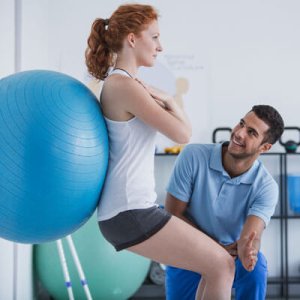 A new season brings an ideal opportunity to focus on building healthy movement habits. As we step into Autumn, we often feel a shift in energy. At the start of the year, we may have set many goals, particularly around movement and health – it’s vital to approach these with a focus on long-term sustainability.
A new season brings an ideal opportunity to focus on building healthy movement habits. As we step into Autumn, we often feel a shift in energy. At the start of the year, we may have set many goals, particularly around movement and health – it’s vital to approach these with a focus on long-term sustainability.
According to exercise physiology principles, creating movement habits that support strength, mobility, and endurance can significantly improve long-term health outcomes. Here we will go through three top movement tips to help carry you through the season and the rest of 2025 that will help you move better, stronger, and maintain movement throughout the year.
Move Smart: Prioritise Quality Over Quantity
When we think about exercise, we often focus on how much weight we can lift, how far we can run, or how long we can hold a plank. However, building a foundation to work from and focusing on moving well is essential. This means prioritising proper movement patterns to ensure that you’re not only strengthening your body but also protecting it from injury.
Good movement patterns are essential for performing exercises safely and efficiently. Improper technique can lead to stress on the joints, muscles, and connective tissues, increasing the risk of injury over time.
Move With Function in Mind
Functional movements are exercises that mimic the movements you perform in daily life, such as bending, lifting, reaching, twisting, or squatting. Integrating these types of exercises into your workout routine not only improves your strength and mobility but also helps you perform everyday tasks more easily and with less effort.
As we age, we lose muscle mass and joint flexibility, making simple activities like bending down to pick something up or reaching for an item on a shelf more challenging. Functional exercises improve your ability to move efficiently and safely, reducing the risk of falls and injuries.
Listen and Rest: Recovery Fuels Progress
Rest and recovery are often overlooked in the pursuit of fitness goals, but they are crucial to your success. Overtraining can lead to burnout, injury, and diminished performance. Active recovery – such as light walking, swimming, or yoga – should be considered just as crucial as your intense workout days.
Exercise places stress on your body, and while that stress promotes adaptations like muscle growth and improved cardiovascular health, it’s during rest that your body actually heals and becomes stronger. Inadequate rest can lead to chronic fatigue, poor sleep and an increased risk of injuries.
Get Started today
Use the rest of 2025 to build an exercise physiology-based movement practice that supports a healthy lifestyle. We want to help you move well and functionally far into the future. If you would like help along this journey, book an appointment with Jasmine, our Exercise Physiologist at Vitality Semaphore.
CONTACT US
References
- Bishop, D. (2017) ‘Recovery from training: A brief review’, Journal of Strength and Conditioning Research, 31(4), pp. 1455-1462.
- Clark, M.A. and Lucett, S.C. (2015) NASM’s Essentials of Personal Fitness Training. 5th edn. National Academy of Sports Medicine.
- Morrison, S. and Tappen, R. (2018) ‘Functional fitness training and its impact on daily living activities: A systematic review’, Journal of Strength and Conditioning Research, 32(8), pp. 2344-2355.
- Patterson, S.D. and Dimeo, F. (2017) ‘Rest and recovery for performance: Exploring sleep and its impact on physical performance’, Sports Medicine, 47(1), pp. 31-41.
- Schoenfeld, B.J. and Grgic, J. (2018) ‘Resistance training volume and hypertrophy: The evidence and implications for practitioners’, Sports Medicine, 48(5), pp. 1227-1244.
- Willardson, J.M. (2007) ‘The application of resistance exercise to enhance functional capacity’, Journal of Strength and Conditioning Research, 21(4), pp. 1234-1241.
- Zhao, M. and He, L. (2020) ‘The effects of functional training on physical fitness and health: A systematic review and meta-analysis’, Journal of Sports Sciences, 38(4), pp. 378-388.
